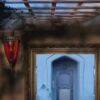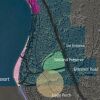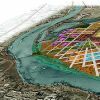Assign 01 Expressive Images
Instructor
Nancy
Cheng, 204c Pacific Hall, 346-3674 nywc@darkwing.uoregon.edu
Objectives
- to understand design potential of Photoshop
- to become acquainted with uploading images from the local disk to a remote location
PART I:
| Self Portrait |
Try our practice files!
|
Create an interesting 150 x 150 image of yourself for your webpage.
0. Get your password: All registered students have a UO computing account with a password available through DuckWeb > Personal Information > View UO Computing Accounts Information
1. Create the portrait. Take a digital picture of yourself. Use photo-correction tools to improve the image quality and crop to a square shape. Use geometric transformation, filters, and color changes to make it more expressive. As you work, save versions in Photoshop format as 1.0me.psd, 1.1me.psd, etc, a version that will save your layers and work. Review the set, select your favorite one, resize to fit the standard 150x150 pixels with Image menu > Image Size. Save for Web as 1.1me.jpg for a thumbnail that will be visible from the class page.
2. Upload to the Web. University network space is assigned to you at the time you sign up for email. Using a File Transfer program such as SFTP, WS-FTP, Fetch or FTP (File Transfer Protocol), log on to the Darkwing or Gladstone server with your email user name and password to work on your remote university account. Find or create a public_html directory, create a new “arch610” subdirectory and an “images” subdirectory inside that one \name\public_html\arch610\images
On your local machine's Desktop, dig though the file system to find your 1.1me.jpg file. Drag it into the public_html folder of your remote account to upload the web page template.
3. Check the page with Netscape Navigator or Internet Explorer. If your e-mail is jsmith@darkwing.uoregon.edu, you would enter your URL in Netcape as http://darkwing.uoregon.edu/~jsmith/
The image file should be at http://darkwing.uoregon.edu/~jsmith/arch610/images/1.1me.jpg
4. Upload additional versions: Resize, Save for Web and upload additional versions making sure to preface the file names with 1.1, 1.2, 1.3, etc. Keep files small to save disk space and for quick downloading.
PART II:
Architectural Transformation
 oscar campos  lonny anderson  weston becker |
1. Create a digital image. Scan one of your drawings, or shoot a digital photo of a model, space or building that pleases you. 2. Create expressive versions with Photoshop by experimenting with some of the following:
3. Upload and check that images are visible using Netscape Navigator or Internet Explorer. If you cannot view them, check the file format and the naming conventions. If you succeed in viewing the work you've done, it means you are now officially on the web! |
References
Julio Bermudez's Digital / Analog Studio
SIGGRAPH art and design
Ashford, Janet and John Odum Start with a Scan
Mitchell, W.J., The Reconfigured Eye
Image Processing Links
|
|
|
|
|
